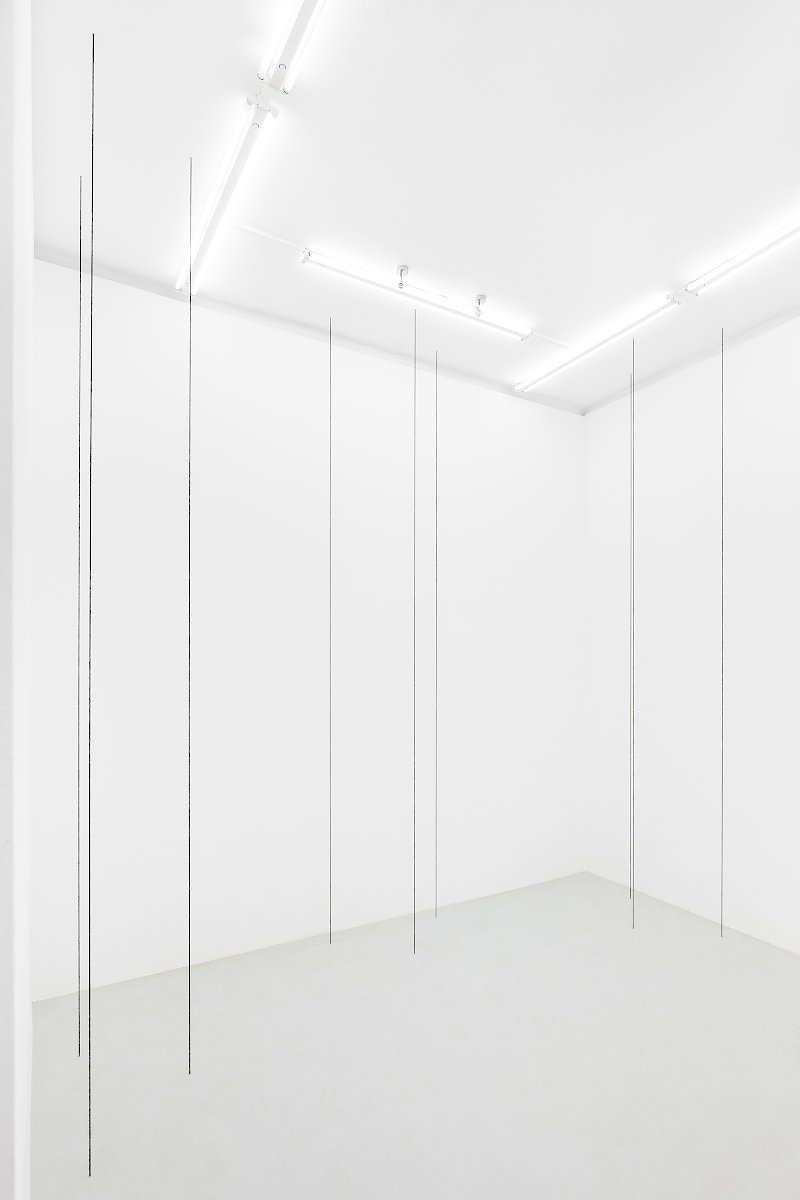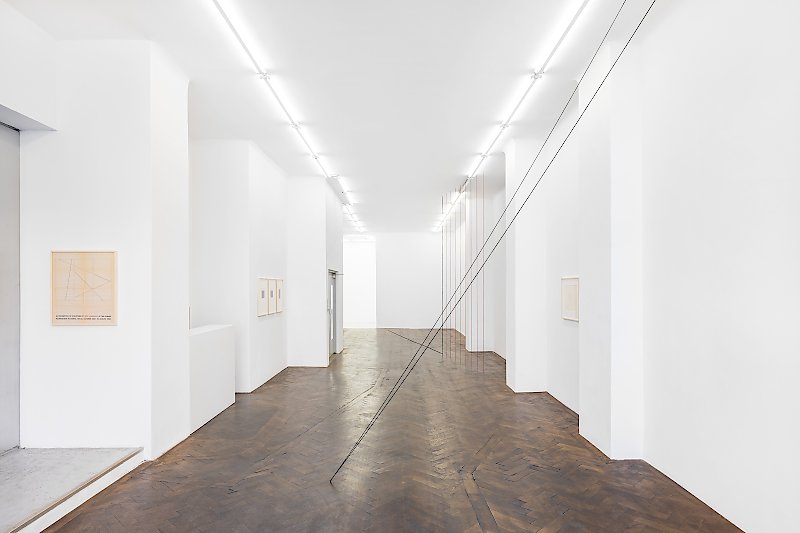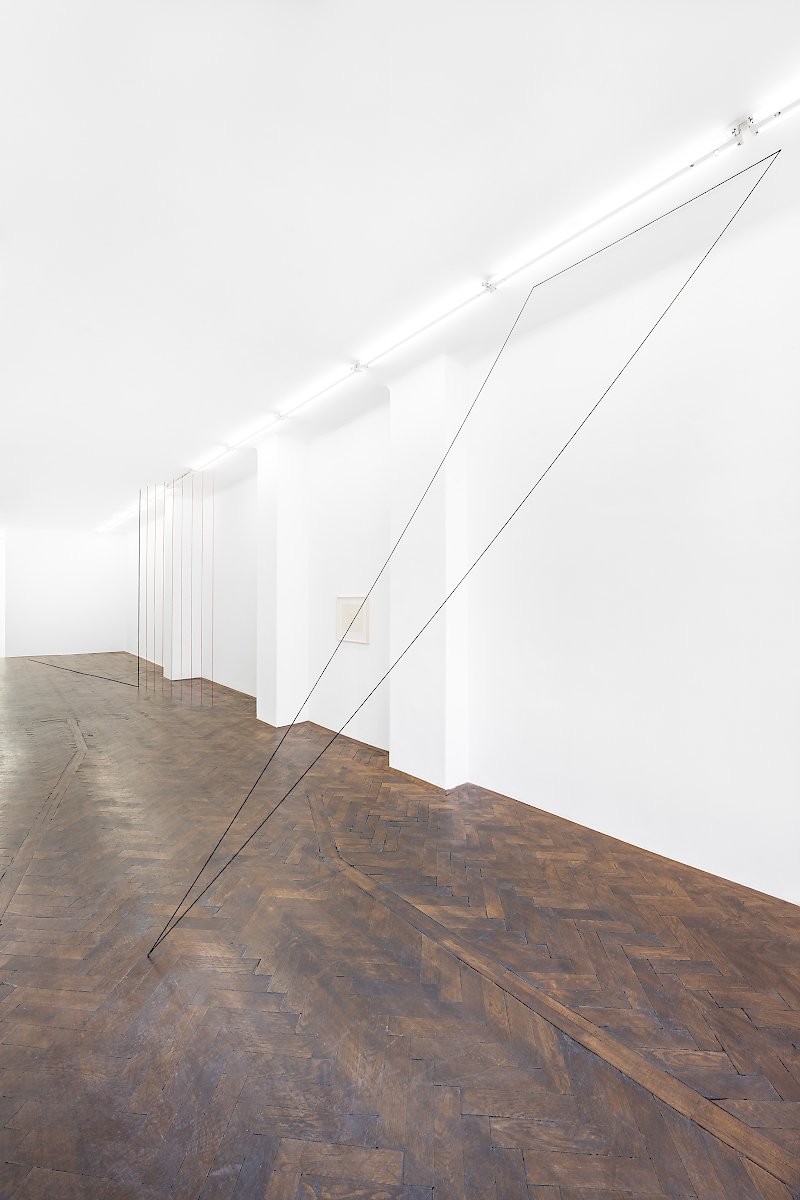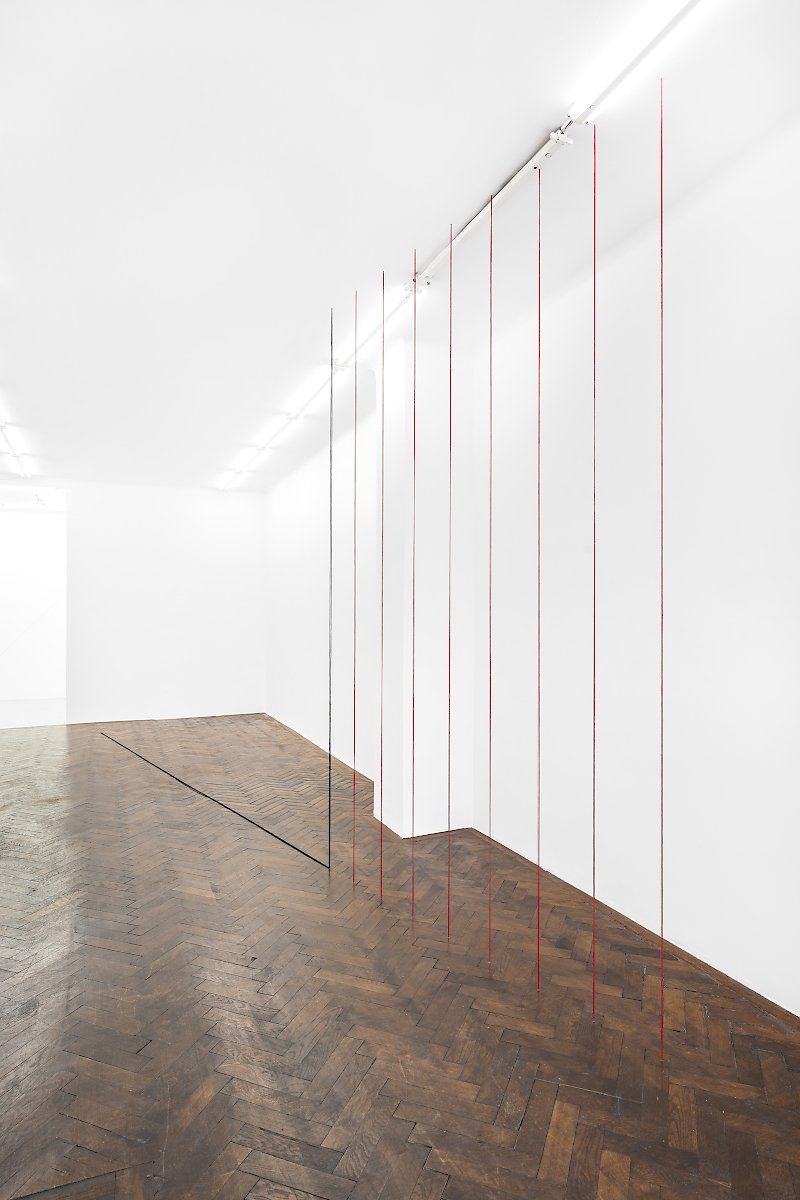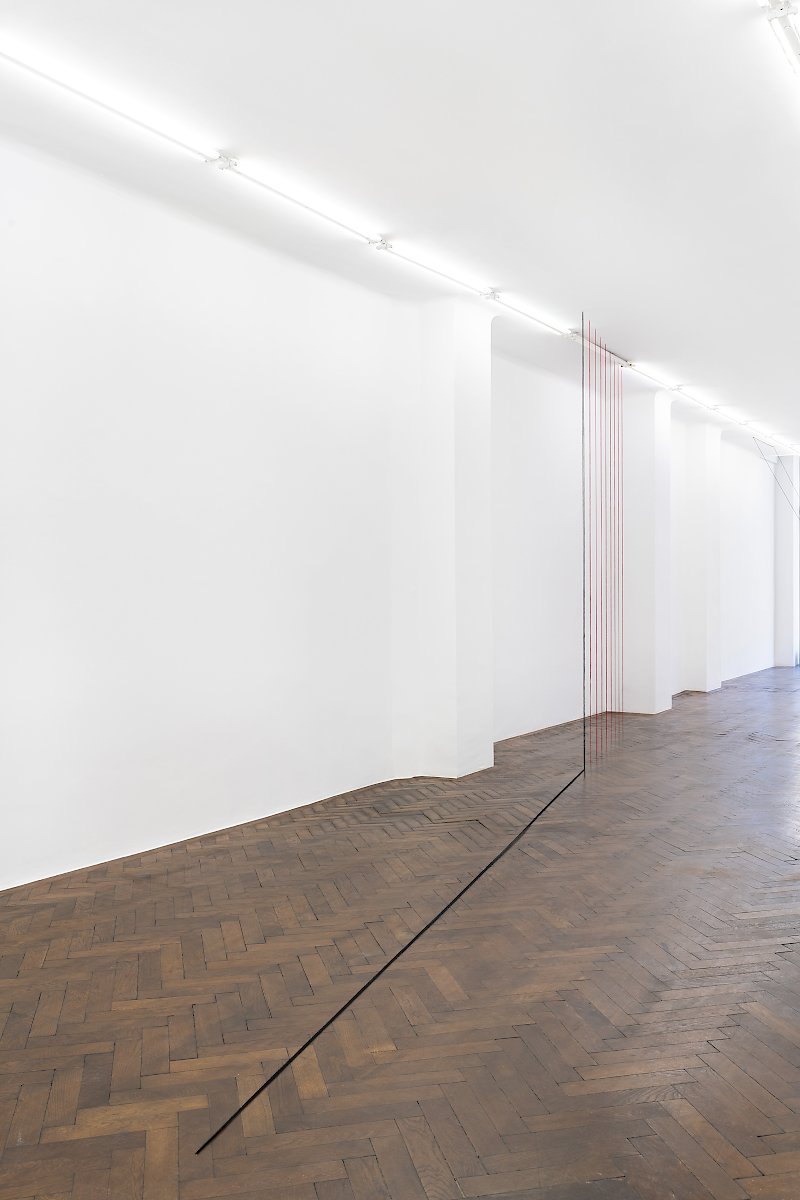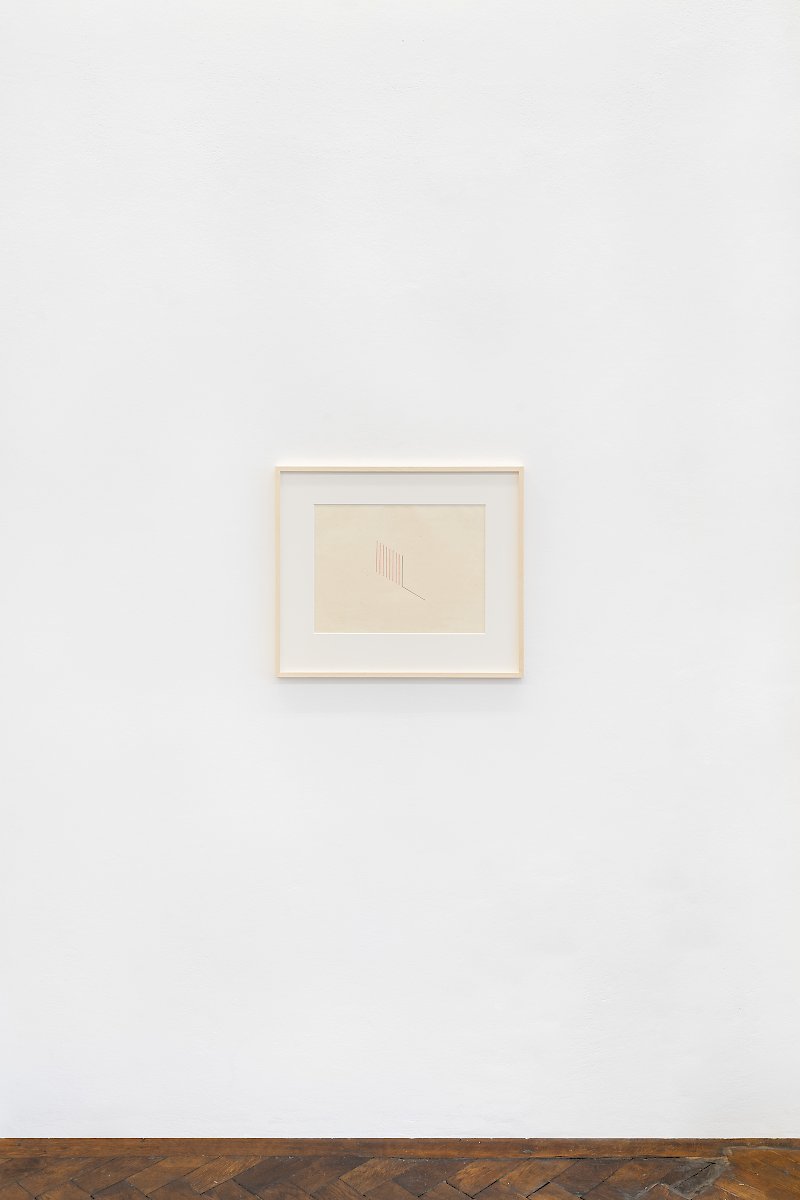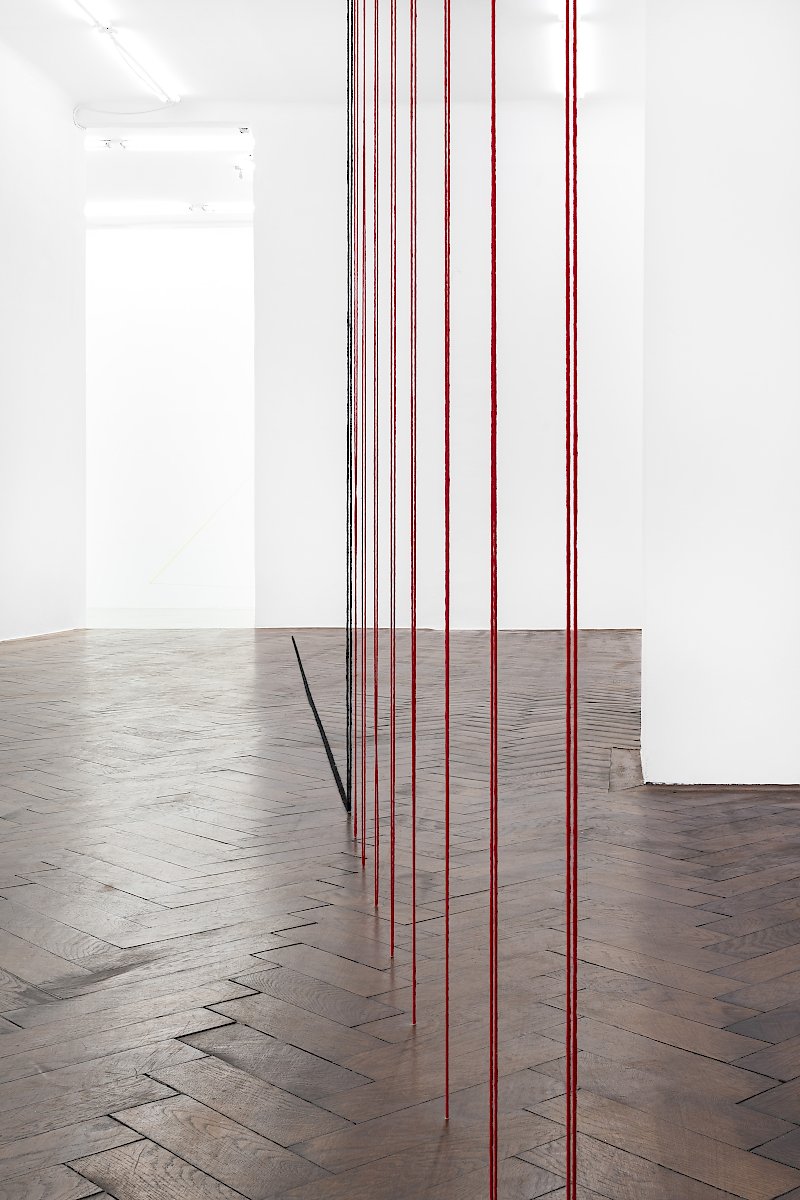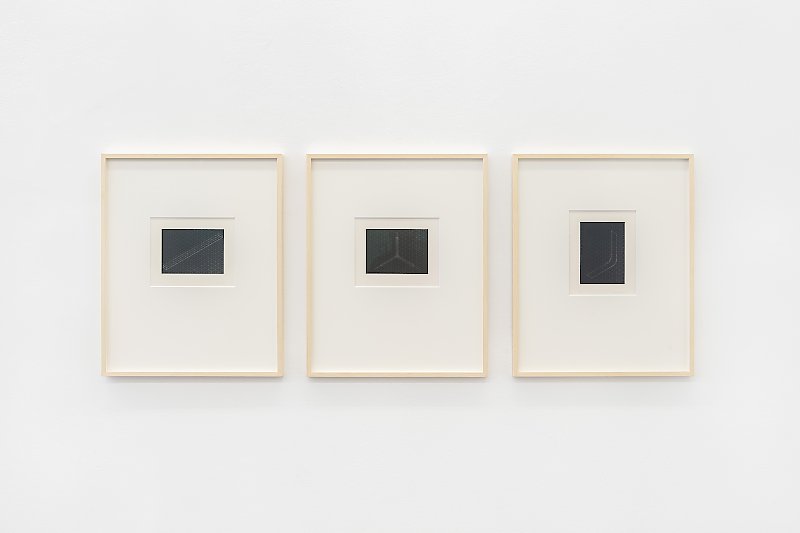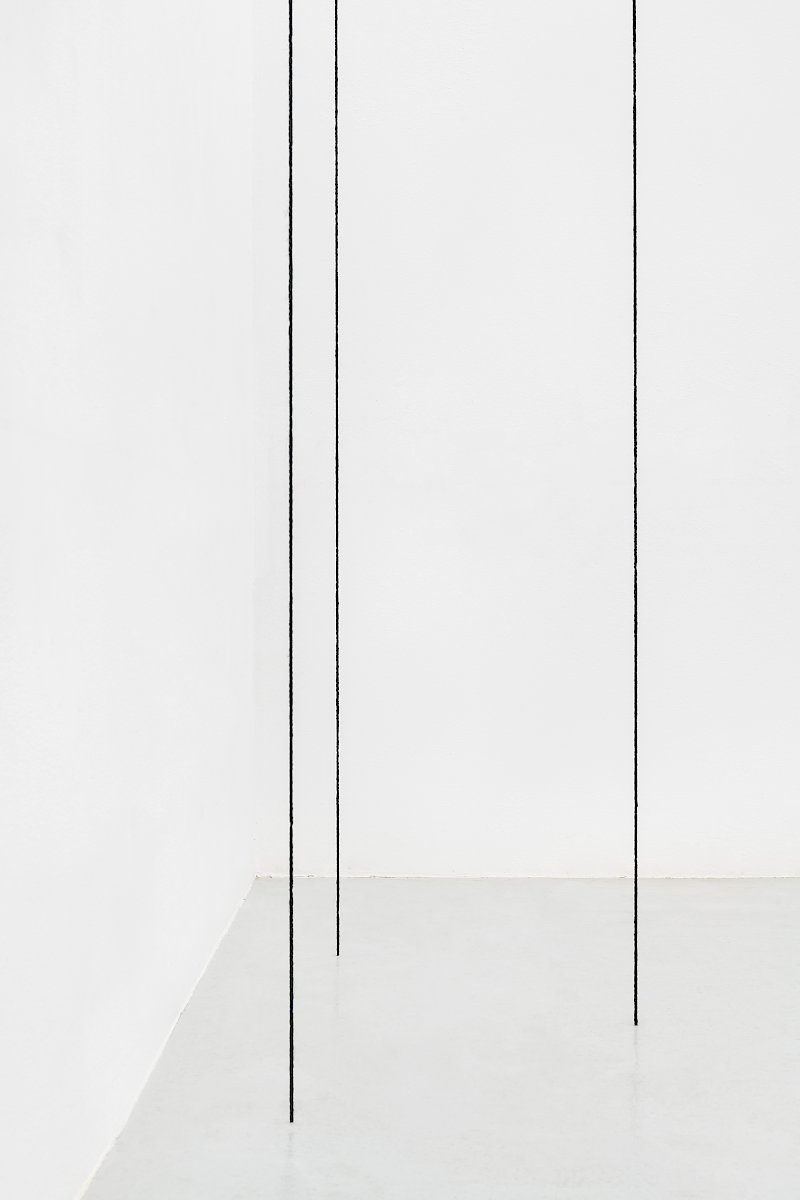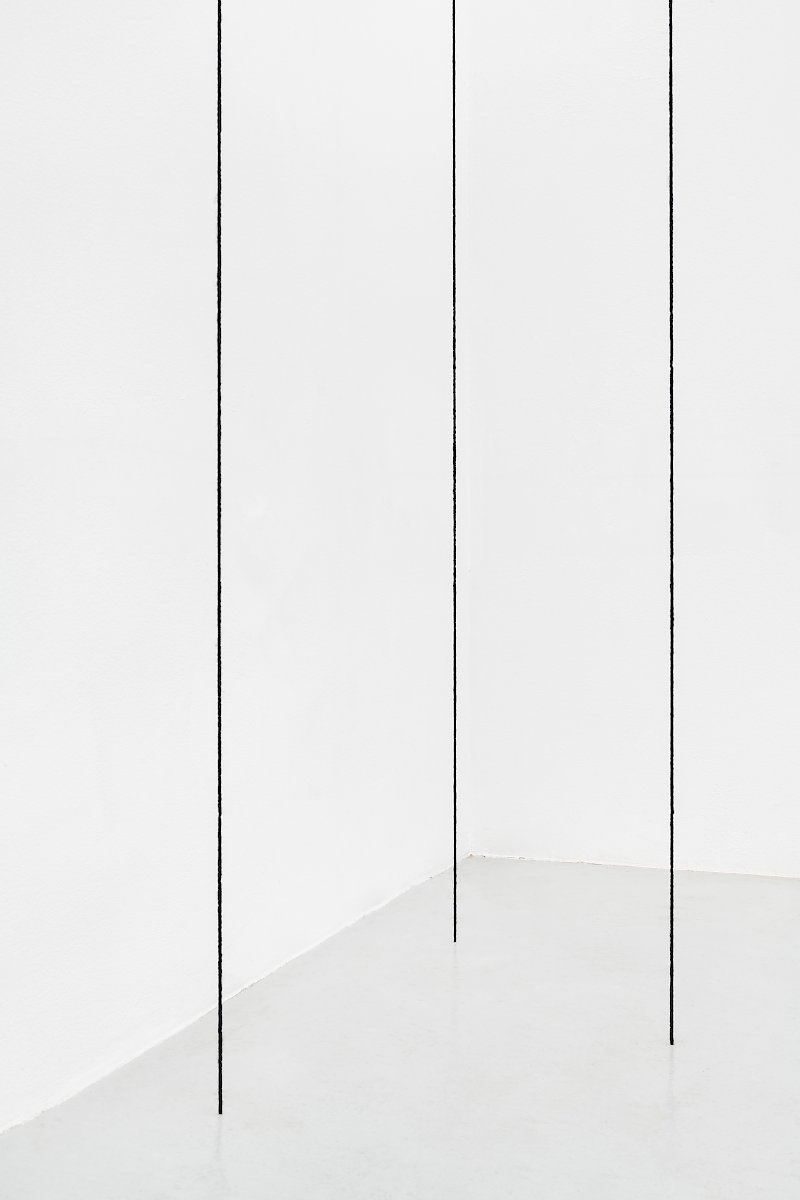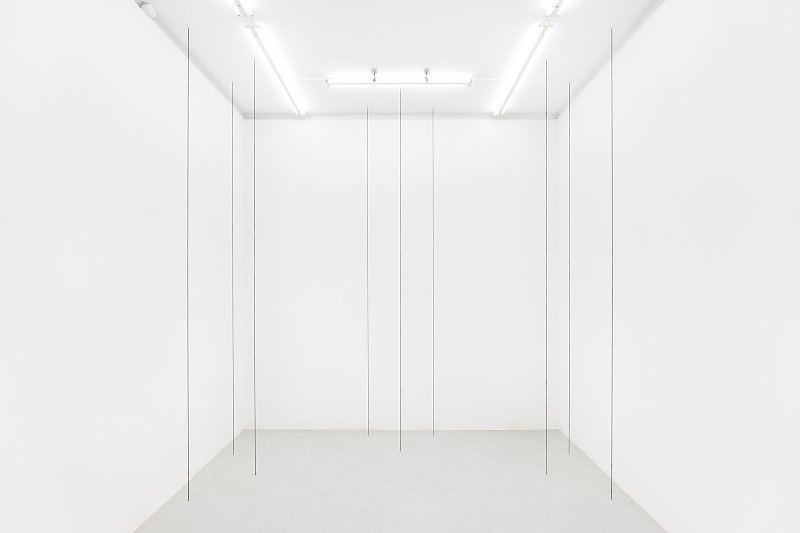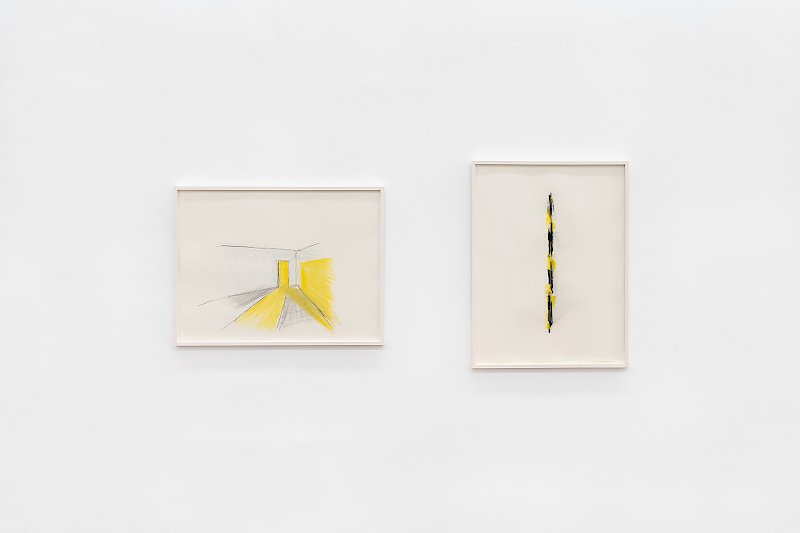Herr B. – Ich halte daran fest. Habe ich Sie überzeugt?
Herr A. – Nicht ganz, Ihrem leidenschaftlichen Ton zum Trotz.
Herr B. – Überhaupt nicht?
Herr A. – Doch, ein wenig.
Herr B. – Ein wenig. Aber das war nur das Vorspiel. Ich fange erst richtig an...
Timbre and Tone: Fred Sandback’s Sculpture
Edward A. Vazquez
As Fred Sandback told the story, “It was 1967. I rapped painting, groused about narrative, pictorial content, material content, signifying content. George Sugarman sort of snapped, ‘Stretch a piece of string between two points and leave it be.” [1] The idea was certainly not meant literally, but it proved generative for this graduate student in the Master of Fine Arts program at Yale School of Art.
According to the artist: “I think my first attraction to this situation was to the way it allowed me to play with something both existing and not existing at the same time.” [2] Such works—made of commercially produced acrylic yarn—seemingly expand well beyond the facts of their strands, cutting through vast areas of interior space, shading them with a palpable and seemingly unreal presence. Investigating this tension of matter and materiality, and the ways that each suggests the other, was one of the artist’s principle interests. As Sandback explained in an interview: “Well, the materiality of the situation that I am involved in certainly is of major concern to me. My manipulated material is simply a small part of that, proportionally. There are big ‘empty’ spaces in between the lines. They’re no less real or material than the lines themselves.”[2] Sandback explained, most clearly and straightforwardly, “In no way is my work illusionistic. Illusionistic art refers you away from its factual existence toward something else. My work is full of illusions, but they don't refer to anything. Fact and illusion are equivalents. Trying to weed one out in favor of the other is dealing with an incomplete situation.” [3]
According to Sandback’s Vienna-based gallerist and friend Hubert Winter “Fred had a disarmingly simple approach to his work: he entered the room carrying a sample case containing different-colored acrylic yarn, sat down on a chair, stared for a long time, said nothing, left the room after a while for a walk, came back, sat down again, and stared… All he needed was a ladder and some tape. Once Fred was sure about how he wanted he would … [span] the threads. The installation was complete.” [4]
Precisely through an experience of these moments of formal and spatial coalescence—of line and color in tension within the room—we not only come to a greater understanding of what it might have been like for the artist to be and have been in a particular place, but ultimately of how we, flat-footed in our own pedestrian spaces, stand in relation to our own world of objects, environments, and each other.
This text is adapted from a text by Edward Vazquez.
[1] Fred Sandback quoted in “Lines of Inquiry: An Interview with Joan Simon,” (1997) reprinted in Fred Sandback. Ex. cat. (Vaduz: Kunstmuseum Liechtenstein; Edinburgh: Fruitmarket Gallery; Graz: Neue Galerie am Landesmuseum Joanneum; Bordeaux: capcMusée d’art contemporain; Ostfildern-Ruit: Hatje Cantz, 2005), p. 135.
[2] Fred Sandback quoted in “An Interview: Fred Sandback and Stephen Prokopoff,” (1985) reprinted in Fred Sandback, p. 111.
[3] Fred Sandback, “Notes,” (1973) reprinted in Fred Sandback, p. 88.
[4] Hubert Winter, “My Recollections of Fred Sandback,” in Fred Sandback, p. 210.
